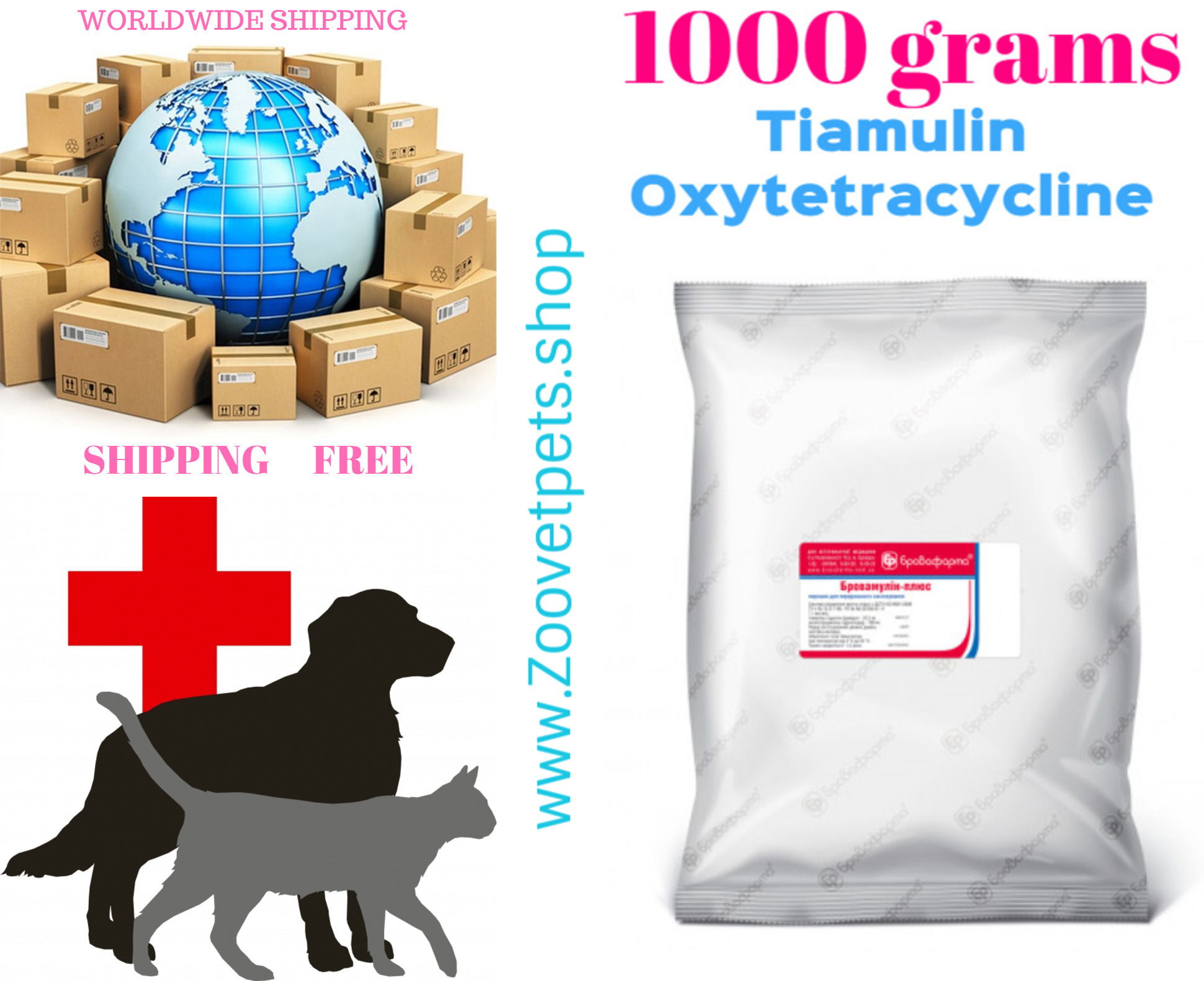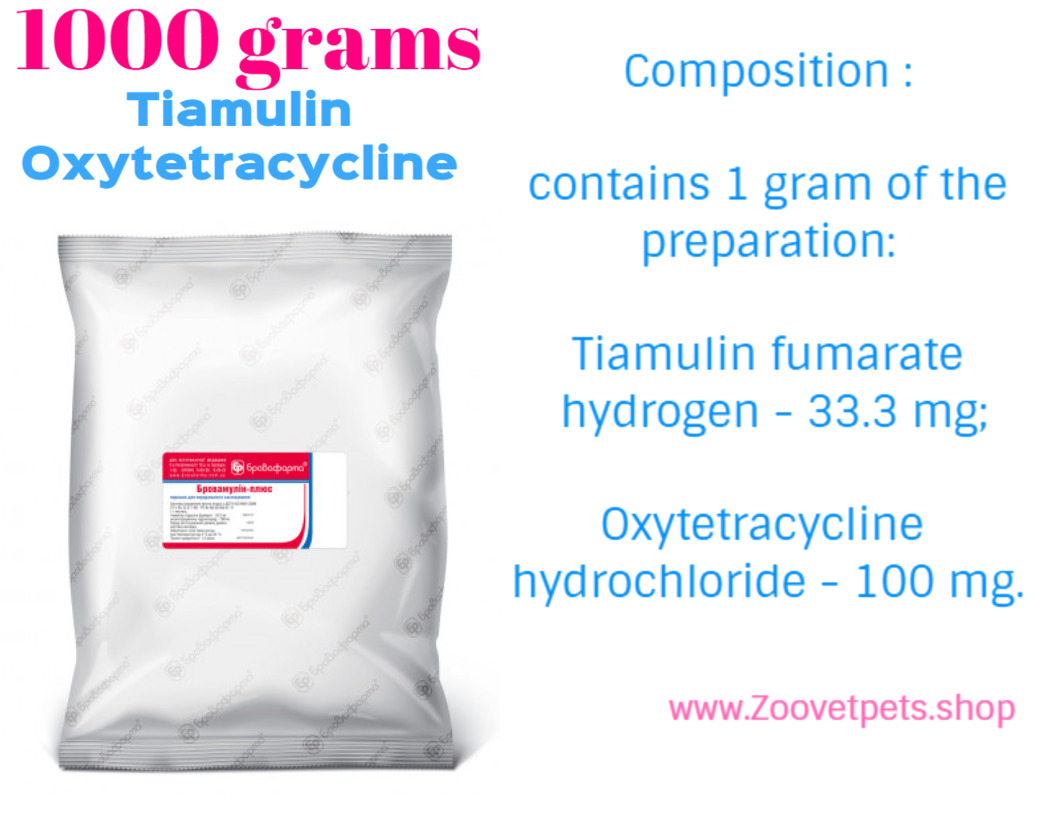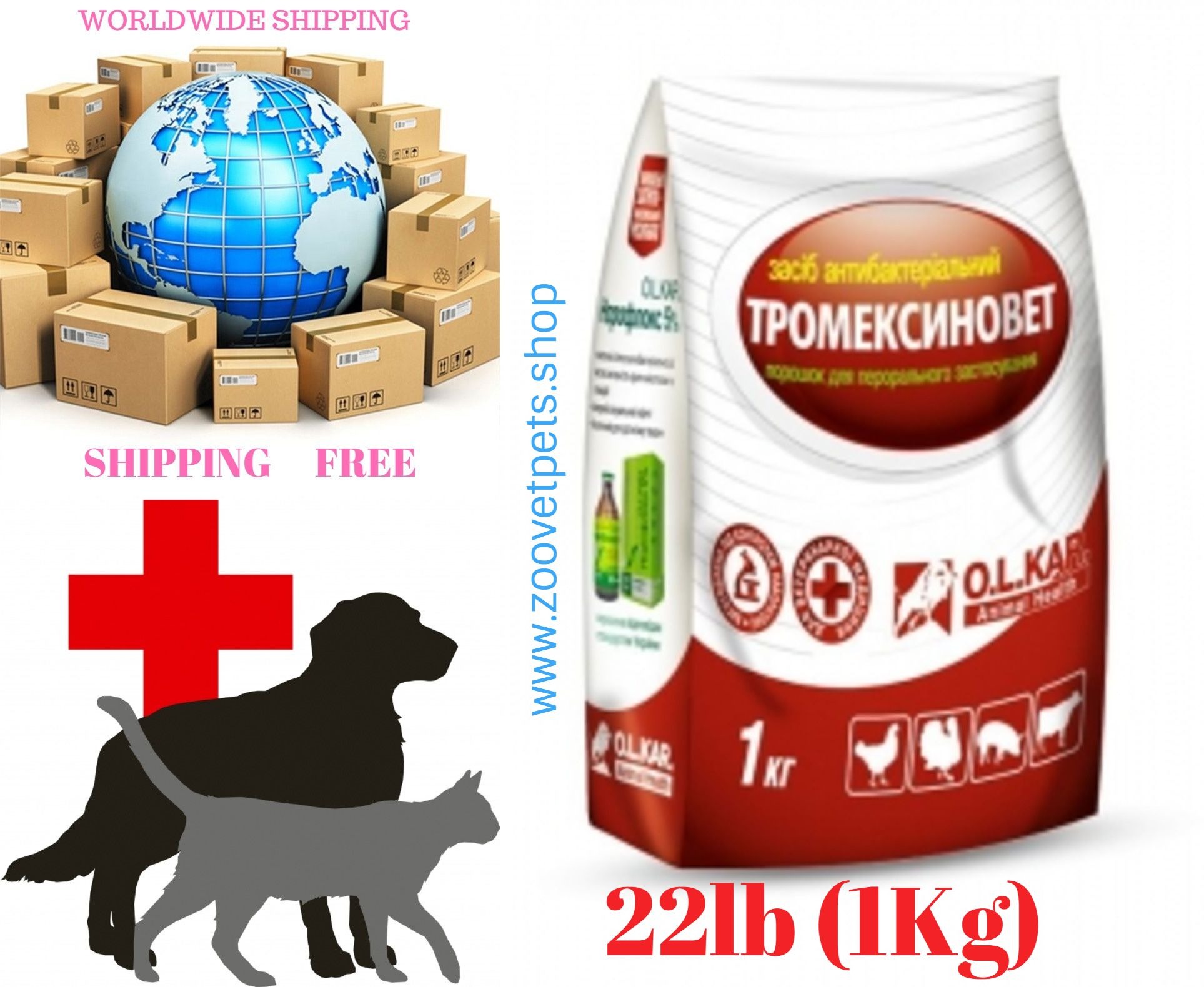Description
Composition :
contains 1 gram of the preparation:
Tiamulin fumarate hydrogen – 33.3 mg;
Oxytetracycline hydrochloride – 100 mg.
Description :
Powder of light yellow color, with a specific odor, is dissolved in water.
Pharmacological properties :
The combination of thiamulin and oxytetracycline has a wide range of bacteriostatic action against most mycoplasma hypopneumoniae, M. hyorhinis, M. synoviae, M. hyosynoviae, Ureaplasma spp.., spirochaetes Serpulina hyodysenteriae, S. innocens, a number of Leptospira spp. serotypes, Treponema hyodysenteriae, bacterial infections of the respiratory and digestive organs – Salmonella spp., Bordetella spp., Erysipelothrix spp., Pasterella spp., Pseudomonas spp., E. coli, Campylobacter coli, etc..
Tiamulin fumarate hydrogen acts bacteriostatically, and in very high concentrations – bactericidal. The mechanism of action consists in combining with 50S ribosomal subunit of sensitive bacteria, which leads to a disturbance of protein synthesis in the cell of the bacteria. Tiamulin is active against many gram-positive coccuses, including most Staphylococcus spp., Streptococcus spp. (but not D. streps), mycoplasm and spirochaetes. The activity of thiamulin against gram-negative microorganisms is low, except for Haemophilus spp. and some strains of E. coli and Klebsiella spp.
Thiamulin is quickly absorbed from the gastrointestinal tract, the maximum concentration in serum is reached 2-4 hours after application. After assimilation it is intensively distributed in tissues and organs, high concentrations are fixed in the liver, and the lowest – in muscles. It is fully metabolized and quickly excreted from the body with urine (20-24% of the applied dose) and bile. It remains unchanged in the liver and kidneys only 1 day after cessation of treatment.
Oxytetracycline belongs to the tetracycline group and acts bacteriostatically. It inhibits protein synthesis by joining to the 30S ribosomal subunit of microorganisms and prevents their joining to the ribosomal aminoacil transport RNA. Tetracycline also binds back to 50S ribosomes and changes the permeability of the cytoplasmic membrane of sensitive microorganisms. It is active against most mycoplasma, spirochaetes (including those causing borreliosis), chlamydia and rickettsia, and certain strains of Gram-positive bacteria: Staphylococcus spp., Streptococcus spp., Actinomyces spp., Bacillus anthracis, Clostridium rerfringens, S. tetani, Listeria monocytogenes, Nocardia spp. It is active in vitro and in vivo against the gram-negative bacteria Bordetella Gr., Brucella Gr., Bartonella Gr., Haemophilus Gr., Pastella multocida, Shigella Gr., Yersinia regr.
After application, oxytetracycline is quickly and completely absorbed. After 30 minutes, its concentration in serum is almost 60% of the therapeutic, the maximum concentration is reached after 2 hours. Oxytetracycline is evenly distributed in tissues, except for nerve and fat, 20-25% binds to plasma proteins. It is almost not metabolized in the body – about 60% is excreted with urine in unchanged form, the rest – with bile.
How to use and doses :
The drug is used with drinking water or compound feed mainly by group method.
When preparing a therapeutic feed mixture should be carefully mixed with compound feed.
It is possible to store and use such LCS for 3 months.
Therapeutic dose is 30 grams per 22lb (10 kg) of mixed feed. In the severe course of pneumonia or gastroenteric infections, the dose can be increased to 40-45 grams.
When used with drinking water daily therapeutic dose is 1.5-2 grams per 1 liter of water, the course – 5 days.
Before preparing a therapeutic solution prepare the concentrate: the calculated dose of the drug is placed in a plastic or enamel bowl, add 10 parts of water temperature 104-113F (+40-45 ° C) and stir.
The resulting mixture is added to the daily norm of water.
Cautions :
After the last application of the drug slaughtering animals for meat is allowed in 10 days. Meat obtained earlier than this period is disposed or fed to unproductive animals, depending on the conclusion of the veterinarian.
Readings :
Treatment of pigs for dysentery, colibacillosis, pasteurellosis, salmonellosis, atrophic rhinitis, enzootic pneumonia, pleuropneumonia, proliferative enteropathy (ileitis), arthritis of bacterial etiology, infections accompanying viral transmissible gastroenteritis.
Contraindications :
Do not prescribe to animals with hypersensitivity to thiamulin and oxytetracycline. Do not use simultaneously with monenzine, parasitic and salinomycin.
Storage conditions :
Do not use with monenzine and salinomycin:
In a dry, dark place at temperatures between 40-77F (+4 to +25 ° C).
Shelf life – 2 years.







Reviews
There are no reviews yet.